







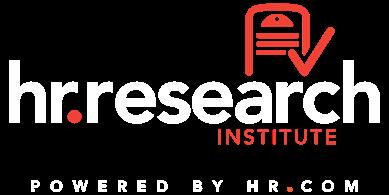



APRIL 2023 • Vol.10 • No.04 (ISSN 2564-2030) PAYROLL TECHNOLOGY: WHAT’S IN STORE FOR THE FUTURE - Excellence Publications Team The Current State and Future of Payroll 2023 Page 19- 44 Sponsored by:









Payroll Technology: What’s In Store For The Future How should payroll tech evolve to meet HR’s needs in future? - Excellence Publications Team 07 On the Cover INDEX HRIS & Payroll Excellence APRIL 2023 Vol.10 No.04 (ISSN 2564-2030) Articles 10 Unpaid Overtime Pay Claims: How Can Employers Lessen Liability The best defense is a good offense - Robert Boonin, Labor & Employment Attorney, Dykema 13 3 Keys To Future-Proof Your Payroll Team Preparing for the future of payroll; top trends and strategies - Rachele Collins, Senior Principal Client Experience analyst, Strategic Advisory Services, ADP 46 How To Improve HR Processes With Benefits Administration Platforms Streamlining compliance, open enrollment, and employee experience - Matt Kim, Co-founder, SureCo The Current State and Future of Payroll 2023 Page 19- 44
Payroll: Top 5 Trends To Look


Out For In 2023
What’s in store for payroll
- Excellence Publications Team
Top Picks 12 17
The Future Of Payroll
The importance of compliance with taxation legislation in payroll management - Kayla Flint, Principal, and Dena Forgey, Manager and Payroll Solutions Architect, Baker Tilly Digital

49
7 Best Practices For Analyzing And Managing
Overtime Costs
Identifying underlying factors of overtime expenses through cost-benefit assessments

- Brett Farmiloe, Founder and CEO, Terkel.io
56
Payroll Without Borders
Navigating cross-cultural differences with confidence
- Excellence Publications Team
INDEX
How are our HRIS & Payroll Products and Services helping to make you smarter?
HRIS & Payroll Excellence - Monthly Interactive Learning Journal
This monthly interactive learning experience captures key metrics and actionable items and keeps you focused on your Core HR: Payroll for HR and HRIS management goals and solutions.
HRIS and Payroll Virtual Events
Virtual Events in the HRIS and Payroll program merge human resources management as a discipline with basic HR activities and processes within the information technology field. With continuous offerings of new technologies in the HR industry to improve HR practices and efficiencies in payroll and any information systems, there’s a boundless need for education as well as surveillance of systems integration. Each Virtual Event consists of up to 10 credit webcasts.
HRIS and Payroll Webcasts for Credit
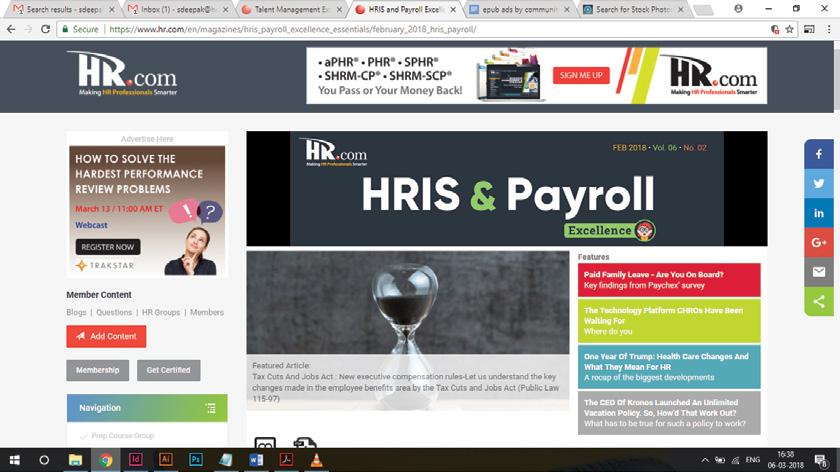
HR.com webcasts deliver the latest HRIS and Payroll industry news, research trends, best practices and case studies directly to your desktop. Webcasts are available live online with a downloadable podcast and a copy of the slides (PDF) available before and after each webcast. Earn all of the required recertification credits for aPHR, PHR, SPHR, GPHR, and SHRM Certifications. HR.com’s one-hour webcasts, in every HR specialty including HRIS and Payroll, are pre-approved for HRCI and SHRM credit (excluding Demo webcasts).
Payroll for HR and HRIS Community
Join over 37,000 HR.com members with a similar interest and focus on Payroll for HR and HRIS. Share content and download research reports, blogs, and articles, network, and “follow” peers and have them “follow” you in a social network platform to communicate regularly and stay on top of the latest updates. This well established Payroll for HR and HRIS Communities are an invaluable resource for any HR professional or manager.

Use these invaluable HRIS & Payroll resources today! For more information phone: 1.877.472.6648 | email: sales@hr.com | www.hr.com
Editorial Purpose
Our mission is to promote personal and professional development based on constructive values, sound ethics, and timeless principles.
Excellence Publications
Debbie McGrath

CEO, HR.com - Publisher
Sue Kelley Director (Product, Marketing, and Research)
Babitha Balakrishnan and Deepa Damodaran Excellence Publications Managers and Editors
Deepa Damodaran Editor

Koushik Bharadhwaj Jr. Editor
Arun Kumar R Design and Layout (Digital Magazine)
Chandra Shekar A K Magazine (Online Version)
Submissions & Correspondence
Please send any correspondence, articles, letters to the editor, and requests to reprint, republish, or excerpt articles to ePubEditors@hr.com
For customer service, or information on products and services, call 1-877-472-6648
Debbie Mcgrath Publisher, HR.com
Deepa Damodaran Editor, HRIS & Payroll Excellence
The Future of Payroll: Trends, Challenges, and Evolving Technologies
Payroll is a constant factor in the relationship between employers and employees, as it provides compensation for services rendered. However, it has evolved beyond its traditional role and become a dynamic tool for companies to support remote work environments, accommodate various compensation agreements, and meet employees’ demands for faster access to funds and pay-related information.
In this edition, we explore the evolving payroll process and technologies, the challenges human resources (HR) faces with current payroll technology, and the trends shaping the future of payroll.
In Payroll Technology: What’s In Store For The Future, featured on the cover this month, HR leaders discuss the top challenges they face with current payroll technology and how it should evolve to meet their needs in the future.
Kayla Flint and Dena Forgey from Baker Tilly Digital emphasize the importance of compliance with taxation legislation in payroll management in The Future of Payroll
Employees’ expectations for timely, fair, and equitable pay, along with their demands for modifications, such as daily pay, pay transparency, and better access to their pay information, have a significant impact on the employee experience.
Organizations must also keep up with inflation rates, comply with payroll-related laws and regulations, and adapt to cultural differences in payroll management as they expand across borders and embrace remote work.
The Current State and Future of Payroll 2023 by HR Research Institute offers a sneak peak into the findings from exclusive research on the current state of payroll systems and future trends that will shape this function.
As businesses expand across borders and embrace remote work, they face the challenge of adapting to the cultural differences in payroll management. Organizations must create compensation policies that respect the diversity of their employees, as well as the cultures they come from. Read Payroll Without Borders to learn how to navigate cross-cultural differences with confidence.
We hope, this edition of HRIS & Payroll Excellence will help you achieve excellence in your core HR and payroll processes.
Happy Reading!
HRIS & Payroll Excellence (ISSN 2564-2030) is published monthly by HR.com Limited, 56 Malone Road, Jacksons Point, Ontario L0E 1L0
Internet Address: www.hr.com
Disclaimer: The views, information, or opinions expressed in the Excellence ePublications are solely those of the authors and do not necessarily represent those of HR.com and its employees. Under no circumstances shall HR.com or its partners or affiliates be responsible or liable for any indirect or incidental damages arising out of these opinions and content.
EDITOR’S NOTE
Subscribe now for $99 / year And get this magazine delivered to your inbox every month Become a Member Today to get it FREE! SIGN UP OR For Advertising Opportunities, email: sales@hr.com Copyright © 2023 HR.com. No part of this publication may be reproduced or transmitted in any form without written permission from the publisher. Quotations must be credited.
HRIS & Payroll Excellence
Write to the Editor at ePubEditors@hr.com
In a world of unparalleled challenges (global pandemic, racial injustice, political rivalry, digital 4.0, emotional malaise), uncertainty reigns. Finding opportunity in this context requires harnessing uncertainty and harnessing starts with reliable, valid, timely, and useful information. The Excellence publications are a superb source of such information. The authors provide insights with impact that will guide thought and action.
Rensis Likert Professor, Ross School of Business, University of Michigan Partner, The RBL Group



Excellence publications are my ‘go-to’ resource for contemporary and actionable information to improve leadership, engagement, results, and retention. Each edition offers rich and diverse perspectives for improving the employee experience and the workplace in general.




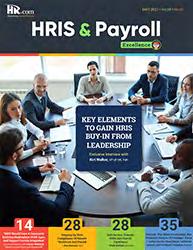

I regularly read and contribute to Leadership Excellence and Talent Management Excellence. I use many of the articles I read to augment my own presentations and I often share the articles with my clients. They are always quick, right on target for the latest issues in my field, and appreciated by my clients. If you want to stay up to date on the latest HR trends, choose a few of the different issues from the Excellence series of publications.
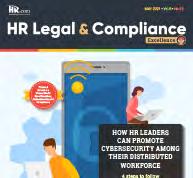


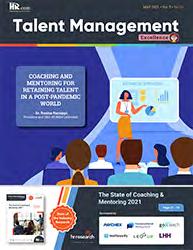
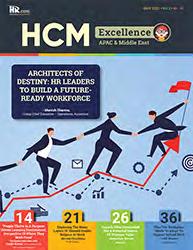
We’re eager to hear your feedback on our magazines. Let us know your thoughts at ePubEditors@hr.com
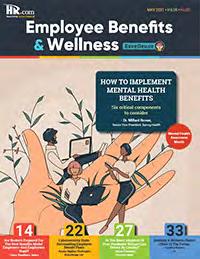
 Dave Ulrich
Dave Ulrich
WHY EXCELLENCE PUBLICATIONS?
Julie Winkle Giulioni Author, Virtual /Live Keynote Presenter, Inc.’s Top 100 Leadership Speakers
Dr. Beverly Kaye CEO, BevKaye&Co.
Payroll Technology: What’s In Store For The Future
How should payroll tech evolve to meet HR’s needs in future?
By Excellence Publications Team
Learnwhat are the top challenges human resources (HR) professionals face with current payroll technology and how should it evolve to meet HR’s needs in future.
employee experience at the heart of it. By so doing, it can become a central tool for employees, improving engagement through integrations, automation of workflows, and ensuring that employees can draw correlations between their performance and their recognition.
Although payroll technology is more commonly used by the HR department, it holds important information for employees and by creating a more user-friendly experience, it helps ensure every employee can access their information.
Jennifer Shewan, VP of People, Wonolo


One of the biggest challenges with payroll technology today is that, for obvious reasons, it is built for compliance and ignores the user experience. This means that the administrative burden frequently falls on HR. The processes are often manual, and cumbersome; with a lot of back and forth with the representative at the payroll provider.
Similarly, it is not always intuitive for employees to find what they need; which then puts the burden back on the HR team and creates an initial set of barriers for employees trying to access their payroll information.
With the digital evolution of HR continuing to develop, it is time for payroll technology to progress with the
Amy Mosher, Chief People Officer, isolved
It’s still common to experience payroll mistakes. One example is when payroll isn’t intelligently connected to timekeeping. We have one company who came to us to change their time solution from another vendor because their time clocks would freeze more often than they would work.
HRIS & Payroll Excellence presented by HR.com APRIL 2023 7 Submit Your Articles
COVER
ARTICLE
As a healthcare services organization, this meant that a manager would practically have to stand to watch when employees would come to clock in and manually keep track of time. This created manual errors when the manager would then go in to enter the time –therefore causing payroll processing delays.
It’s not always the payroll that’s the problem, but that it’s not intelligently connected to the rest of your company’s people processes.
Payroll tech should no longer stand alone. By thinking of payroll technology separately, it does a disservice to HR, benefits and payroll people as well as the employees and employer. When payroll data ties to a broader human capital management (HCM) suite, self-service across the employee journey can be enabled to improve the experience and efficiencies.
Additionally, it can make onboarding more modern, it can automate more payroll processes like tax filings, can enhance data accuracy, and can provide greater visibility into salary data and parity.

When payroll doesn’t work, nothing works in a business, but it should no longer stand on its own.
 Caroline Werner, Chief People Officer at LogicGate
Caroline Werner, Chief People Officer at LogicGate
One of the biggest challenges with payroll management and processing today is the need to stay real-time compliant with state and local requirements when it comes to taxes, unemployment, reporting, etc.
As companies are moving to more remote and/or hybrid cultures and employees are scattered across the U.S., payroll compliance is often overlooked and is quite complex, resource-heavy and challenging.


Payroll tech platforms need to be more dynamic and flexible, including more customized options as a one-size-fits-all doesn’t work anymore, including capabilities for integrations into the HR tech stack.


This is especially important when it comes to data management and reporting, companies need the ability to tailor and modify data fields in general and to meet the ever-changing state filing requirements.

HRIS & Payroll Excellence presented by HR.com APRIL 2023 8 Submit Your Articles
Payroll Technology: What’s In Store For The Future
Alexandria Genetti, Head of People, Enable

As we continue to come out of the pandemic, global workforces are becoming more and more prevalent. We learned that employees can be as (if not more) effective from home.
This has turned into many companies needing payroll and benefits support for employees in additional or distributed countries. Globalization is a valuable new
talent strategy, unfortunately, it’s one that HR tech has yet to evolve to fully support.
International payroll capability is a sharp and effective tool in an HR leader’s tool kit. There are a handful of up-and-coming global employer of records (EORs) that are trying to rise to this occasion and support this globalization movement, inclusive of payroll and benefits support, but we have a long way to go. Companies who operate in global environments strive for consistent payroll and general HR practices, and HR tech is staring down a unique opportunity to build a support stack for those who support global workforces.
Would you like to comment?

HRIS & Payroll Excellence presented by HR.com APRIL 2023 9 Submit Your Articles
Payroll Technology: What’s In Store For The Future
Unpaid Overtime Pay Claims: How Can Employers Lessen Liability
The best defense is a good offense
By Robert Boonin, Dykema
The Problem
The Biden DOL (Department of Labor) is primed to aggressively pursue errors made with respect to the payment of overtime
compensation as required by the Fair Labor Standards Act (FLSA). While doing so, it is also primed to assert claims for liquidated damages whenever it finds errors, even for errors that were
inadvertent, and even for those that may seem nominal. These liquidated damages are equal to the amount of unpaid overtime its investigators deem due.
HRIS & Payroll Excellence presented by HR.com APRIL 2023 10 Submit Your Articles
Liquidated damages are also generally due if an employer is found liable for unpaid overtime in any FLSA lawsuit filed by employees on either an individual or a collective class basis. When such lawsuits are brought, the employer may also be liable for the plaintiffs’ attorneys’ fees. These fees are often much greater than the claim for unpaid overtime and serve to overshadow the merits of the case and interfere with the ability to settle.
The Means to Address This Exposure
Prudent employers can take action to either eliminate or greatly reduce their exposure to unpaid overtime and liquidated damages claims. How? The answer is one word: “audit.”
A skillfully done audit can identify areas that typically trigger these inadvertent errors. The audit can identify and even correct concerns with respect to errors in:
● Identifying hours that are compensable under the Act (such as pre- and post-shift activities, rest and meal breaks, travel, and medical testing and treatment);
● Determining the correct regular rate of pay for calculating overtime pay (such as properly accounting for bonuses, commissions, longevity premiums, shift premiums, call-in pay, etc.); and
● Classifying employees as exempt from overtime or as independent contractors.
Importantly, a mere audit may not suffice. The audit must be done and documented in a way to establish that the employer took its obligations under the Act seriously, conformed to the findings of the audit, and did so in good faith. This is key because if such an audit is relied upon, but the DOL or a court concludes that a violation on the areas audited still exists, the employer may be able to assert a “good faith” defense and reduce or eliminate its exposure to liquidated damages, and even reduce a potential look-back period for liability for unpaid time from three to two years. Such a position can also greatly benefit employers as they try to settle FLSA claims, as a well-done audit can serve to greatly lower the potential value of the claim.
As stated above, the audit must be skillfully done; not all audits are created equal. Often, we recommend that the audit be overseen, if not done, by an attorney who is well-versed in the FLSA. The auditor can help assure that the audit serves to support the good faith defense, if needed, and a lot of that may depend on the auditor’s expertise and reputation.
Further, the auditor can counsel as to suggested adjustments.
Last, but not least, if the auditor is an attorney, or the audit is being conducted through counsel, attorneys can provide assistance in maintaining the confidentiality of the audit’s findings, if desired, or advising the company regarding the waiver of any attorney-client privilege, as may be feasible.
Next Steps
Undertaking the audit sooner versus later cannot be overemphasized. If the project is put off and a DOL audit or lawsuit is filed, the advantages discussed above will be lost. It will be too late, and, as a result, otherwise avoidable liability could be triggered, liquidated damages will likely be in the mix, and the cost of the other side’s attorneys will impair the ability to negotiate a reasonable resolution.

HRIS & Payroll Excellence presented by HR.com APRIL 2023 11 Submit Your Articles
Robert Boonin is Labor & Employment Attorney at Dykema
Would you like to comment? Unpaid Overtime Pay Claims: How Can Employers Lessen Liability
Payroll: Top 5 Trends To Look Out For In 2023

What’s in store for payroll
By Excellence Publications Team
and the demands of an evolving workforce. Payroll management is an essential function of any business and, with forward-thinking practices, can also serve as an effective human resources (HR) strategy to attract, engage, retain, and empower employees.
New and emerging payroll technologies help employees to manage cash flow challenges better as the cost of living rises, improve their financial management, reduce stress, and potentially increase productivity and engagement at work. Outdated payroll practices have the potential to disconnect your business from its workers, driving potential hires away and leading current employees to seek jobs elsewhere.
Nomatter how the economy or workforce changes, payroll remains constant. It is a key piece in the relationship between the employer and the employee — and trust is built when employees are paid accurately and on time. However, payroll has expanded beyond simply providing compensation for services. It has become a dynamic tool for businesses to support remote work environments, accommodate various and increasing compensation agreements, and meet employees’ increasing requests for faster access to funds and salary-related information.
Innovative payroll solutions and technologies are emerging in response to the competitive labor market
Check out this webinar, where Paychex’s payroll experts Karen McClendon (Manager) and Kenneth J. Burtnick (Head of Product Management) share critical payroll industry trends that are influencing how employees and employers engage with one another.
Learn how these trends can help you demonstrate to your employees that you care about them and are looking out for their best interests.
Would you like to comment?
HRIS & Payroll Excellence presented by HR.com APRIL 2023 12 Submit Your Articles
Top Pick
3 Keys To Future-Proof Your Payroll Team
Preparing for the future of payroll; top trends and strategies
By Rachele Collins, ADP
Wehave entered again an employees’ market. Talent — in particular talent with specialized skills such as those involved in processing payroll — is in high demand. Consider the following statistics:
● The latest data show a 1.81 percent unemployment rate for the payroll workforce, indicating high demand for professionals and difficulty in finding workers
● Fifty-eight percent of payroll specialists stay in a job only two years or less, on average, signifying employers need to do a better job of engaging and retaining their current workforce
● 74 percent of payroll specialists are more than 40 years old, representing an aging workforce
Now, more than ever, it is imperative for employers to “future-proof” by ensuring that they have the appropriate plans in place to foster agility and bench strength on their teams.
How to “Future-Proof” Your Payroll Team
While 100 percent “future proofing” may not be possible, the following strategies are realistic and achievable, and will tremendously benefit those payroll teams who think ahead.
1. Plan for the Immediate, Mid-term and Long-term Staffing
Smart payroll teams create plans for multiple staffing horizons.
A. Leverage job handoff documents.
The unexpected exit of a valued payroll staffer can not only be disheartening to coworkers, but also very disruptive to the business, and, ideally, managers are closely in tune with their employees so that these types of surprises are infrequent. However, when they do happen it is important for the team to have in place job handoff documents or similar to transfer the most critical knowledge of an exiting employee over the next few weeks.
Payroll teams should create a job handoff document for critical roles on the team. A job handoff document outlines the essential duties and tasks of a specific role, as well as the key files, documents, and other important knowledge, that a successor will need to get up to speed quickly.
To prepare this document, you can ask each incumbent (who is already fully functional in the role) to document important tasks, inventory key files, and specify any other critical knowledge involved in both their day-to-day work and any essential reoccurring and/or ad hoc tasks. One way to “test” the handoff document is to have it peer-reviewed to ensure that all important considerations are included. In addition, the handoff document should be updated annually as payroll roles continuously evolve with the adoption of new processes, tools, and technologies. An example template to get you started can be found online.
HRIS & Payroll Excellence presented by HR.com APRIL 2023 13 Submit Your Articles
B. Ensure that the team has knowledge transfer plans in place for retirements.
It is important that payroll teams are proactively reviewing their team’s demographics and the potential for retirement, especially given that the average age of specialists these days is headed toward half a century.

Smart organizations plan for the retirement of their payroll specialists and the associated knowledge transfer through several means, like mentoring and shadowing relationships with successors, expert and storytelling video interviews with payroll experts on how to do key tasks, and/or process mapping with these experts to capture their knowledge before it walks out the door. Department leaders may also consider future retirees for consulting during their transition, and/or engaging contract help.
C. Create succession plans to grow payroll talent over the longer term.
Succession plans prepare high-potential individual contributors, leaders, and/or critical talent for future
roles within the organization. Succession planning is often tied into the performance management process and involves a structured talent review process for key talent, which may not only be the actual leader of the team, but also those in critical roles and with deep technical or system knowledge.
Teams should engage in succession planning as part of a systematic process to build bench strength. Yet surprisingly, only 41 percent of respondents to recent research said that they engaged in succession planning for payroll, indicating a potential long-term talent risk for their organizations.
2. Build the Skills of the Future Within Your Team
As shown in the statistics at the beginning of this article, payroll talent is getting increasingly harder to find. Training and development have repeatedly been proven to be key engagement and retention levers, and it is important to keep an eye on the future when it comes to where skills are trending.
HRIS & Payroll Excellence presented by HR.com APRIL 2023 14 Submit Your Articles
3 Keys To Future-Proof Your Payroll Team
Some of the most important skills of the future for supporting a digital finance function are technical, such as fluency with payroll technology/automation, as well as proficiency in analyzing employee data related to this area. But softer skills such as business partnering and collaboration are also important because it does little good to be able to analyze data, and then not be able to effectively communicate insights and potential impact to your payroll team and other interested stakeholders both downstream and upstream of the process.
Furthermore, continuous improvement skills such as business process management (addressed in point #3 below) are important to both the current and future success of payroll. Business process management is a key tool in the quality toolkit for payroll professionals, and they should have at least a base level of fluency in designing and improving their own processes.
While the traditional 70/20/10 model (e.g., 70 percent on-the-job training, 20 percent coaching
and mentoring, and 10 percent formal training and development) can be leveraged for the payroll team and has proven very effective over the years, developing skills of the future will also involve going above and beyond this model, such as ensuring that staff are certified through professional associations such as the American Payroll Association (APA) and the Society for Human Resource Management (SHRM), as well as taking advantage of vendor automation-specific certifications
More and more professional associations are catering to this need for skills of the future by offering sessions on topics such as people analytics, robotic process automation, and artificial intelligence.
While payroll professionals do not need to be software engineers, they will need a base level of competency in these emerging topics to keep up with the trends. Smart employers annually invest in their teams’ skill development and include career development discussion and planning as part of their regular performance management process.

HRIS & Payroll Excellence presented by HR.com APRIL 2023 15 Submit Your Articles
3 Keys To Future-Proof Your Payroll Team
3. Capture and Document Critical Knowledge
A third element of “future-proofing” the payroll team is capturing and documenting critical knowledge. This task often falls into the quadrant of not urgent, but important in Stephen Covey’s scale, which is why it often does not get done. But few other activities make so much of a difference in the future-proofing of the team than documenting and understanding current state processes/procedures. Without this in place, needless time will be spent recreating the wheel, and this documentation builds the scaffolding for future team members to build upon, refine, and improve.
Process mapping and documentation involve the key process owners and workers carefully mapping out what they do. This can be as simple as converting facilitated sticky note sessions into a PowerPoint file or leveraging tools such as Visio or a business process management solution.

A related exercise is a technique called knowledge mapping, whereby the team adds an extra layer to the process documentation by noting where key knowledge resides and whether it is documented or held in incumbents’ heads. If the latter, and the knowledge is critical, it points out key risks of knowledge loss that should be captured to avoid unnecessary future payroll crises.
Planning for various staffing horizons, developing skills of the future, and process and knowledge mapping – these are three keys to “future-proofing” your payroll team.
If these activities have not been done in the past, and/ or are not on your radar currently because you are “too busy” fighting fires, ask yourself: “Do I always want to be fighting fires?” “How do we break this cycle?” Breaking the cycle involves building in the time to work on these activities. And the good news is that ADP offers resources to help you in your process improvement endeavors.
Rachele Collins, Ph.D., is Senior Principal Client Experience analyst, Strategic Advisory Services, at ADP. Rachele has been conducting benchmarking and best practices research and working to help clients improve their processes and practices in various capacities for more than two decades. Her areas of expertise include process improvement, measurement, benchmarking, finance and human capital best practices, and organization development. She is a previously certified Senior Professional in Human Resources (SPHR) and SHRM-CP.
Would you like to comment?

HRIS & Payroll Excellence presented by HR.com APRIL 2023 16 Submit Your Articles
3 Keys To Future-Proof Your Payroll Team
This story was originally published on SPARK by ADP®.
The Future Of Payroll
The importance of compliance with taxation legislation in payroll management
By Kayla Flint and Dena Forgey, Baker Tilly Digital
Payrollis no longer about pushing a few buttons and generating perfect paychecks. It is a continuous cycle of information flowing in and out of HR, absence, and time systems. To keep these processes moving smoothly and maintain compliance, payroll teams must be able to keep pace with the ever-changing taxation legislation at the state and local levels.
Taxation legislation changes affect payroll whenever a state adds or amends a tax that is withheld from either employee (EE) or employer taxes (ER) as reporting needs will most likely have to be updated or completely overhauled. This is a struggle for many organizations as most payroll teams lack the technical skills needed to maintain their systems at this level, and the internal company restructuring and workforce reductions in the current economic climate have added to the workload with additional payments to audit and generate.
Industries Ripe for Innovation
Nearly every industry can benefit from innovation and improvement in their payroll
processes, especially those that involve multiple levels of payment codes and taxation on earnings. In particular, the healthcare and higher education industries are ripe for innovation. These industries use multiple retirement plans, such as 401a, 401k, 457b, and 403b with the 401a contribution plan not always part of a delivered solution in the system application.
Healthcare is a 24/7 industry vital to every community, making it essential for payroll teams to track unions, bargaining agreements, on-call pay, salary increase, shifts worked, and premiums paid for those shifts. Multiple moving parts must be organized and managed, and payroll teams often require additional assistance to properly maintain legislative changes to contribution and salary limits.
Both healthcare and higher education industries also employ various types of labor that must be tracked at the human resources (HR) data level and fed into payroll. Because there are a variety of workers, the system must be able to accurately track and differentiate between payroll-eligible employees, volunteers,
and student workers to ensure unpaid and grant-based workers do not receive payroll calculations for the hours they submit. This creates multiple levels of complexity that payroll must manage each fiscal year.
Payroll, HR, and Your Organization’s Technology Strategies
As payroll depends on the data HR gathers and maintains, the accuracy and timeliness of HR data are critical. This data drives eligibility for pay, working hours that could impact payroll and absence calculations, and union membership which would drive dues deductions, among others. HR data must be up-to-date and accurate so that employees are paid correctly in a timely fashion.
Payroll should also play a role in an organization’s technology strategies as the payroll integrations coming into a system and returning to vendors are important for financial reporting on many levels. For example, payroll technologies keep 401k balances updated in the third-party tools, report union due deductions and pull in election changes for payroll to process.
HRIS & Payroll Excellence presented by HR.com APRIL 2023 17 Submit Your Articles
Top Pick
Similarly, in the current flexible/ hybrid work environment, paid time off (PTO) management tools that seamlessly integrate information into the payroll module are essential. Without that data in payroll, hourly employees may end up missing pay, and while salaried employee pay might not be affected, the general ledger (GL) costing will.

Indirectly, absence management tools affect accounting for how wages hit accounts. Without the approved absence, an employee who does not clock time for a day would appear to be out of compliance with company attendance policies, affecting HR decisions.
The Future of Payroll


Payroll policies and calculations will need to be just as flexible as the hybrid schedules that more workers are enjoying. This will require both work from home and work location taxation, sometimes within the same pay period. Systems will need to be able to handle new and different working days and hours that today’s employees are requesting more frequently.
As always, payroll professionals are required to stay up to date on legislative changes that affect payroll calculations each fiscal year. Examples of state-level changes include updates to rates or the addition of Family Leave Insurance, State Disability
Insurance, or State Unemployment Insurance. Federal-level changes include increased limits for Social Security taxable income thresholds, retirement limits both pretax and post-tax, and benefit limits, like Health Savings Accounts. Organizations that can build internal capabilities to absorb these changes on an ongoing basis and integrate them into their technology and processes will be the most effective in meeting their objectives.
Conclusion
Payroll is a complex process that involves several systems, legislation compliance, and accurate data management. Complex and highly regulated industries present unique challenges that require innovative solutions to streamline and improve the payroll experience. Keeping up with the latest technology trends and adapting to the changing work environment will be critical for payroll, HR and finance professionals to meet the needs of the modern workforce while remaining competitive in today’s dynamic business landscape.
HRIS & Payroll Excellence presented by HR.com APRIL 2023 18 Submit Your Articles
Proper Pre-Payment Practices: Validating Your Payroll
Kayla Flint is a Principal with Baker Tilly Digital Consulting, leading the Oracle Cloud practice.
you like to comment?
Dena Forgey is a Baker Tilly Digital Experienced Manager and Payroll Solutions Architect.
Would
The Current State and Future of Payroll 2023




by:
Sponsored
Consider more integrated, transparent and strategic approaches that leverage great partnerships
INTERACTIVE APRIL 2023 Special Research Supplement April 2023
Sponsor any of this year’s state of the industry research topics and come away with your very own affordable and branded research report and infographic, establish yourself as an industry thought leader by presenting at a one-day Virtual Event, and bolster sales through the generation of qualified leads.

The Future of HR’s Role in Organizational Success
Virtual Event
May 18, 2023
Learn more at: hr.com/organizationalsuccess
The Future of Employee Well-being
Virtual Event
Jun 7-8, 2023
Learn more at: hr.com/ EmployeeHealthResearch
The Future of Performance Management
Virtual Event
July 12-13, 2023
Learn more at: hr.com/PMResearch
The State of Human Experience in the Workplace Virtual Event

Aug 16, 2023
Learn more at: hr.com/ HumanExperienceResearch
The State of High-volume and Hourly Hiring
Virtual Event
Jun 20, 2023
Learn more at: hr.com/ HighVolumeRecruitingResearch
The Future of Talent Acquisition Virtual Event
Sept 6-7, 2023
Learn more at: hr.com/FutureTalentAcquisition
Align your
this
brand with
year’s State of the Industry hot HR topics and showcase your expertise
list of hot industry research topics below and give us a call to get started. A State of the Industry Research & Virtual Event Sponsorship Opportunity Contact us today to get started at sales@hr.com | 1.877.472.6648 | hr.com/industryresearch
See
By Kenneth J. Burtnick, Paychex



 By Stefanie San Juan, Rippling
By Stefanie San Juan, Rippling

The HR Research Institute, powered by HR.com, the world’s largest social network for Human Resources professionals, is a key part of our mandate to inform and educate today’s HR professionals. Over the past three years, the HR Research Institute has produced more than 85 exclusive primary research and state of the industry reports, along with corresponding infographics in many cases, based on the surveys of thousands of HR professionals. Each research report highlights current HR trends, benchmarks, and industry best practices. HR Research Institute Reports and Infographics are available online, and always free, at www.hr.com/featuredresearch

The Current State and Future of Payroll 2023 22 ARTICLES RESEARCH REPORT SUMMARY Survey conducted by: Sponsored by: Payroll Challenges: What to Consider When Paying a Global Workforce By Kira Rubiano, Atlas 28 The Future of Payroll
36 The Role of an Employer of Records (EOR) In Compliant Global Hiring
40 How to Avoid Remote Payroll Management Mistakes By Michelle Feddersohn, Globalization Partners 32 HRIS & Payroll Excellence presented by HR.com APRIL 2023 21 Submit Your Articles INDEX
The Current State and Future of Payroll 2023
Consider more integrated, transparent and strategic approaches that leverage great partnerships

Payroll has a tremendous effect on the employee experience. Apart from their expectations to be paid in a timely, fair and equitable manner, employees increasingly expect modifications, such as daily pay, pay transparency, and better access to their pay information.
Further, organizations must strive to keep up with inflation rates, which lead to added financial stress for many employees, and to comply with the payroll-related laws and regulations of the regions where they hire their employees.



HR.com’s HR Research Institute recently conducted a study to learn the current state of payroll systems and future trends that will shape this function.

22 RESEARCH REPORT SUMMARY STATE OF THE INDUSTRY RESEARCH
Exclusive Study By The HR Research Institute
Strategic Payroll Functions Are the Exception, Not the Rule
Finding: Organizations are most confident in their ability to comply with laws/regulations and least confident in their ability to offer valuable payroll add-ons

Payroll in most organizations is responsible for certain goals. We asked respondents to rate the ability of the pay strategy in their organizations to meet these common goals. More than 8 in 10 respondents believe the pay strategy in their organization is good or excellent at complying with laws/regulations.
However, just over half (54%) believe that the payroll strategy in their organizations is good or excellent at controlling unnecessary costs/ expenditures, and less than half (47%) say it is good or excellent at enhancing employee payroll experience or adjusting pay for work in different geographies.
We believe that with the increased prevalence of remote work and geographically dispersed employees, coupled with high demand for key talent, it is often important to devise a pay strategy capable of improving employee experience and adapting to the needs of employees in different locations.
23 RESEARCH REPORT SUMMARY STATE OF THE INDUSTRY RESEARCH
How would you rate the ability of your organization's pay strategy to: Percent responding good/excellent
Comply with laws/regulations
Control unnecessary costs/expenditures
Enhance employee payroll experience
Adjust pay for work in different geographies
Differentiate the organization from its competitors
Keep pace with economic trends (e.g., inflation)
Empower payroll employees to contribute as strategic business par tners
Offer valuable payroll add-ons (e.g., earned wage access)
Under half of organizations give high ratings to their ability to enhance the employee payroll experience
24 RESEARCH REPORT SUMMARY STATE OF THE INDUSTRY RESEARCH 0 20 40 60 80 100 Good Excellent 83% 54% 47% 47% 44% 39% 32% 26% 43% 40% 41% 13% 35% 12% 31% 16% 29% 15% 34% 5% 24% 8% 17% 9%
Payroll Encounters Both Strategic and Process Challenges

Finding: Over a third of organizations find complying with wage, hour and taxation policies and regulations to be quite challenging, and most view it as at least moderately challenging
Organizations are almost equally divided on whether they find compliance with all wage, hour and taxation policies and regulations (local, national and corporate) easy or difficult.
More than a third (35%) say it is a significant challenge (4 or 5 on a 5-point scale), while more than two-fifths (44%) say it is relatively easy (1 or 2 on the same scale). This still leaves, however, 56% that view it as at least moderately challenging.
Finding: Organizations find paying competitively to be the most pressing challenge to payroll strategy today
The most pressing challenge facing organizations with regard to designing their current payroll strategy is the need to pay competitively in today’s market (62%). This is likely driven by the need to hire and retain key talent in an environment of high inflation and pay transparency laws.
This may be why a little over half (52%) also say that keeping up with economic trends (e.g., inflation and recession) is challenging. Moreover, these economic trends lead to other challenges, such as employees’ financial stresses (35%).
25 RESEARCH REPORT SUMMARY STATE OF THE INDUSTRY RESEARCH
Which of the following are the top 5 challenges that your organization faces with regard to its current pay strategy? (select up to 5)
Paying competitively in today's market
Economic trends (e.g., inflation, recession)
Employees' financial stresses
Improving pay equity
Hiring or retaining qualified payroll professionals
Managing differences in local, regional and national laws
Staying abreast of evolving payroll legislation
Imbalance between payroll costs and revenue
Paying a geographically dispersed workforce
Reconciliation of payroll data
Inadequate pay-related technologies
Complying with pay transparency laws
Administering pay for both exempt and non-exempt workers
Unsatisfactory outsourcing relationships
Editor’s Note: In the original data, 5% of respondents stated that they “face no challenges ” We removed those responses and recalculated, so this only shows percentages for those that face challenges.
More than a quar ter (26%) cite managing differences in local, regional and national laws to be a challenge
26 RESEARCH REPORT SUMMARY STATE OF THE INDUSTRY RESEARCH 0 10 20 30 40 50 60 70 80 62% 52% 35% 32% 26% 26% 26% 20% 20% 19% 17% 17% 10% 10%
Finding: About a third of organizations struggle with a lack of technology integration in regard to their payroll processes

When it comes to payroll processes, a lack of technology integration is the most widely cited challenge, chosen by nearly a third of organizations (31%). About a quarter also say inflexible payroll systems (26%) and inconsistent or minimal automation (25%) cause difficulties.
These three issues can be traced to the lack of appropriate technologies in payroll systems.


To learn more, we invite you to download and read the research report today:
Read
27 RESEARCH REPORT SUMMARY
STATE OF THE INDUSTRY RESEARCH
the Research
Report
Payroll Challenges: What to Consider When Paying a Global Workforce
Kira Rubiano, Atlas

Hugeopportunities exist when a company decides to pursue global expansion: new markets, new audiences, and access to a larger talent pool. But expanding your organization’s geographic reach does not always mean opening an office or branch in a new country. Sometimes, it is hiring talent in the new market or relocating a current employee.
This might seem easy, but cultural and legal nuances require up-to-date local knowledge to stay compliant in managing your global team. And if you are planning on expanding into multiple countries, the challenge becomes even more significant. For example, say you would like to expand in the

UK, France, and Brazil; it is crucial to understand the types of employees you are hiring and each market’s distinct employment and payroll laws.
Correctly Classify Each Employee
First, you must define the relationship between the company and the employee. Are you hiring talent as a full-time team member or an independent contractor? The two differ in terms of payment, benefits, taxes, and more. Hiring a contractor offers more flexibility to the working relationship while hiring an employee gives employers more control of day-to-day tasks. It is essential to classify correctly to avoid legal repercussions.
STATE OF THE INDUSTRY RESEARCH 28 ARTICLE
Comply with Local Laws
Once you understand how each employee fits into your company, you have to understand the local labor laws. Keeping up with the regulations of every market where your employees reside can be daunting. Employment contracts, salary requirements, working hours, and holidays vary from country to country.
For example:
● Under Nicaraguan Law, the labor code establishes 15 calendar days of paid annual leave every 6 months of work.
● Employees in Brazil are entitled to 30 calendar days of paid annual leave, and employers must pay 1/3 of an employee’s salary as a vacation bonus.

● In Norway, parents can take 49 weeks of parental leave at full pay between them, or 59 weeks at 80% pay. The employer pays the benefit and is reimbursed by the state.
The administrative work that comes with staying abreast of all regulations can be overwhelming, but noncompliance with local regulations can damage your business and often result in hefty fines.

STATE OF THE INDUSTRY RESEARCH 29 ARTICLE Classification Considerations Contractor Full-time Employee On company payroll x Project-based hire (short term) x Responsible for their own taxes x Receives employee benefits x
Compensate with Confidence
This is where a Direct Employer of Record (EOR), like Atlas, can help. With entities in more than 160 markets, our Direct EOR model allows us to help you hire employees under our legal entity on your behalf. As the legal employer, we can onboard new talent, manage team members and take care of essential payroll and human resources (HR) administration tasks. We will also ensure you are compliant with all tax obligations and employment laws.
● Our tech-enabled solution then makes it easy to manage and pay your people all over the globe. As a result, we reduce your time spent on HR and related admin, freeing you to focus on your business.
● The Atlas HXM software simplifies HR admin, employee management and payroll management processes with a secure, intelligent, tech-enabled solution. Paying employees in multiple markets is simple, safe, and smart.


● Our platform is complemented by market intelligence and up-to-date insights on tax and regulatory compliance needed to hire and manage global talent. Localized expertise
helps companies navigate the complexities of international HR, payroll and local laws based on unique business needs.
● Our Account Managers are available to provide real-time data, insight, and analytics when you need them.
Need a compliance check?
Set up a free 15-minute call to discuss common global payroll pitfalls, and the solution to ensuring international compliance.
Kira Rubiano is VP of Global Payroll Operations, Atlas. Kira oversees a talented team of global payroll professionals, who process thousands of employees in over 105+ countries. Before her role at Atlas, Kira was the Customer Engagement Director and US Lead at Immedis, as well as the Head of the International Payroll Management Division and US Operations of Auxadi, a global BPO Firm. Kira has over 15 years of experience in global payroll.
Would you like to comment?

STATE OF THE INDUSTRY RESEARCH 30 ARTICLE

How to Avoid Remote Payroll Management Mistakes
Michelle Feddersohn, Globalization Partners

Remote work has taken over the global workforce — and it is not going anywhere. In fact, 25 percent of all professional jobs in North America were expected to be remote by the end of 2022. Remote opportunities are similarly expected to continue to increase across the globe throughout 2023.
Remote work opened the opportunity for companies to hire the most qualified professionals anywhere in the world, without the need to move them to a centralized office. However, this work model comes with its challenges — one of which is remote payroll management.

STATE OF THE INDUSTRY RESEARCH 32 ARTICLE
Why Do You Need to Optimize Payroll Management for Remote Teams?
Effective payroll management involves processing payroll transactions, coordinating time control systems, monitoring payroll changes (new hires, resignations, etc.), and more — all while in compliance with local laws and regulations. However, most remote teams are spread across different countries and time zones. This makes payroll complicated and a bit cumbersome when it comes to taxes, labor rules, social security laws, and payment methods and currencies.
Companies must regularly revisit and optimize their payroll management process to remain in compliance with local regulations and requirements. Failing to do so could result in fines or sanctions.
It is no surprise that payroll management also has an impact on employee retention. According to research, 43 percent of employees say they would leave an employer that repeatedly paid them late or incorrectly.
In this article, we share some key considerations to help you manage payroll for your remote team.
Key Considerations for Optimizing Your Remote Payroll Management
1. Define procedures and policies
Since remote payroll management can be complex, defining procedures and policies will help you avoid payroll errors, and help you scale compliantly.
These procedures and policies must define how you are going to:
● Collect and verify employees’ information.
● Store and record documents such as contracts, tax forms, or pay slips.

● Establish payment frequency and number of payments per year.
● Track time and attendance.
● Determine currency according to every employee’s location.
● Establish a payment method (direct deposit, transfer, pay cards, or checks).
● Report and update records.
2. Pay contractors and employees compliantly
Regardless of whether your company is hiring contractors or full-time employees, it is crucial to classify and pay them compliantly to avoid mistakes and misunderstandings that could lead to legal breaches.
Contractors are not part of a company’s payroll and must be paid separately and differently from full-time employees. Contractors have a fixed price, project-based payment. They are responsible for paying their own taxes and don’t participate in any benefits programs. Full-time employees receive wage-based payments, their employers are responsible for paying their taxes and social charges, and they are entitled to receive benefits, vacations, and paid leave.
There are payroll solutions that allow you to hire and pay both contractors and employees on the same platform. This way you ensure compliance when it comes to employee classification and payments.
3.
Use automated tools
When it comes to remote work, one of the biggest trends is the use of automation tools in all areas, including payroll management.
STATE OF THE INDUSTRY RESEARCH 33 ARTICLE
Automated payroll systems can help teams simplify and speed up payroll setup and management to increase efficiency and improve productivity
Quality payroll systems will automate:
● Payment scheduling
● Tax calculations and filings
● Tracking of time worked, overtime, and attendance
● Financial record keeping
● Payroll data updating
● Benefits, bonus, and raise calculations
4. Ensure compliance with local rules and regulations
Payroll compliance can be a challenge. It is crucial to know and understand that rules, regulations, and requirements vary from country to country, and even state by state in countries like the U.S.
These rules and regulations include:
● Minimum wage
● Overtime and maximum weekly work hours
● Leave allowance
● Pay frequency
● Required benefits
● Taxation
Make sure you are well informed on how to set up payroll in each location you hire to avoid penalties and lawsuits. Monitor local laws to stay up to date on changes that could affect payroll to ensure compliance.
5. Leverage local expertise
Managing payroll requires time, effort, and resources. Even with a quality payroll automation
platform in place to streamline the process, it is important to have access to local expertise. In-country human resources and legal experts will help you ensure you are in compliance with local laws and regulations, particularly as they evolve over time. These experienced full-time specialists can answer any questions you may have so you feel confident about your payroll management process.
As remote work evolves, it is crucial for companies to optimize payroll to ensure they’re paying employees according to local requirements, on time, and without mistakes. This is where Globalization Partners comes in.
Our #1 SaaS-based Global Employment Platform™ lets your business expand quickly and affordably, wherever opportunities take you, without setting up local subsidiaries or branches. With 99 percent payroll accuracy and regional experts available whenever you need them, you can rest assured you’ll remain in compliance with country-specific labor and tax laws — so you can focus on keeping your workforce happy and engaged.
This article first appeared here.
Michelle
 Sr. Director of Global Payroll at Globalization Partners
Sr. Director of Global Payroll at Globalization Partners
 Feddersohn is
Feddersohn is
STATE OF THE INDUSTRY RESEARCH 34 ARTICLE
Would you like to comment?

The Future of Payroll Prepare
Now for What’s Next
Payroll has expanded beyond simply providing compensation for services. Payroll industry trends are influencing how employees and employers engage with one another, becoming a dynamic tool for companies to support remote work environments, accommodate various and increasing compensation agreements, and meet employees’ requests for faster access to funds and pay-related information. In addition to being compensated with fair and livable wages, employees want employers who demonstrate they care about their workers and are looking out for their best interests.
Here are Five Trends Shaping the Future of Payroll

1. Increased Pay
The September 2022 Employment Cost Index released by the U.S. Bureau of Labor Statistics reported that compensation costs for private workers increased by 5.2% since Sept. 2021. This is on top of a 4.1% increase the prior year. The future of payroll is clear: costs of living have escalated, and many employees may be seeking pay raises to meet their monetary obligations. The Great Resignation has shown that if workers don’t receive fair compensation and a supportive work environment, they won’t hesitate to leave their employers.
For employers, meeting increased pay demands along with higher costs of business operations and the possibility of lower profits can make their businesses more vulnerable. It’s imperative for employers to keep a careful watch on their financial metrics and have a plan in place to help avoid the challenges of meeting payroll obligations. Some payroll providers may provide payroll protection that allows the flexibility to extend collection of payroll funds from your bank account by up to seven days, like the Paychex Promise® program.
2. Pay Transparency and Payroll Accuracy
When a business is open about compensation and payrelated information, it can increase an HR department’s confidence regarding financial decision-making. Pay transparency can also help your business look more appealing to current employees and potential new hires because they won’t have to second-guess their compensation package. A worker’s clear understanding of what their compensation will be and why, along with what steps can be taken to increase pay over time, may help remove pay inequity and the perception of bias.
If there is any question that increased pay transparency is a trend, just look at state and local laws. Colorado adopted a salary transparency law in 2019. Since then, California, Nevada, Rhode Island, Connecticut, Washington, and New York followed suit along with the cities of Cincinnati, Toledo, and New York.
So How Does Payroll Accuracy Fit Into the Equation?
Pay transparency and payroll accuracy go hand-in-hand because the first step towards increasing transparency is starting with payroll accuracy. Rather than processing batches of checks and finding errors on the back end, building in more front-end reviews helps resolve pay discrepancies prior to payroll processing. Expanding on the idea of transparency, allowing employees to review their pay information prior to the release of funds is another way to proactively confirm accuracy.
Using Paychex Pre-CheckTM , employees can be involved in the payroll review process and confirm that their earnings and withholdings are accurate prior
to payday. This is crucial for the nearly two-thirds of American workers living paycheck-to-paycheck.1 It also impacts employee retention. Having regular access to this information can also help them make necessary adjustments in withholdings or contributions to pretax accounts so they can take full advantage of their benefits package.
26% of employees will seek new employment after just one incorrect paycheck2
3. Creative Compensation
Although employers may need to increase compensation to remain competitive, not all options need to come in the form of a higher paycheck. Creative compensation plans can help you invest in benefits that put more money in employees’ pockets. One of the top employee benefits trends for 2023 is reducing healthcare expenses and providing employee health benefit accounts which can help you accomplish this. Similarly, a dependent care flexible spending account (DCFSA) can help ease the burden of daycare costs for children and dependent adults. Other benefits — public transportation passes, healthy lifestyle coaching, employee assistance programs, or health insurance plans that offer financial incentives for healthy behaviors — are all creative ways to increase the total compensation your employees receive from your business.
States and states with local jurisdictions that have salary history bans in e ect
States and states with local jurisdictions that have salary history bans in e ect and have enacted state pay transparency laws States with no pay transparency regulations States and states with local jurisdictions that have salary history bans in e ect States and states with local jurisdictions that have salary history bans in e ect and have enacted state pay transparency laws States with no pay transparency regulations
4. Faster Payroll and On-Demand Pay
The increased speed of today’s payroll technology has enabled companies to process payroll faster, opening up new payment options.
Same-day pay for hourly employees and the availability of shorter payroll cycles are helping employees who may experience financial instability. These types of alternative payment methods are typically facilitated by self-service apps that give employees instant access to a portion of their earned pay. Wages accumulate in the app daily, allowing employees to access their earnings if needed. While this might not be relevant for every business or sector, this type of payroll innovation can help people who might normally struggle between paydays and need urgent funds for something that they would normally turn to a payday loan or credit card for.
Offering on-demand pay empowers employees to manage cash flow challenges better, which in turn can improve their financial wellness, reduce stress, and potentially increase productivity and engagement at work. Providing on-demand pay is one way you can demonstrate that you are doing everything you can to help your employees safeguard their financial wellness.
5. Investment In and User Adoption of Innovative Payroll Technology
With every new advent in technology, the world gets a little smaller and more connected. This has resulted in some of the fastest changes within the payroll industry, as today’s payroll leaders are responsible for supporting various types of employees across cities, states, and countries.
However, a recent study by the American Payroll Association has found twenty-nine percent of businesses use a payroll system that is ten years old or older. This not only includes outdated platforms, but also includes methods such as spreadsheets and other forms of manual payroll processing. Clearly, many organizations need a payroll overhaul. If your business is one of them, adopting a new system that leverages the latest payroll technology should be on your to-do list.
Your payroll software should be able to:
• Calculate taxes and paycheck amounts
• Pay taxes
• Process direct deposit payments automatically
• Help you maintain compliance
• Provide technology solutions that extend beyond payroll, such as time tracking and talent acquisition
• Generate reports and payroll analytics
• Offer real-time and on-demand payment solutions
The Evolution of Payroll
As essential as payroll is to the operation of any business, its function has traditionally been viewed as just that, operational. However, this perception is changing as payroll becomes a strategic asset in employee engagement and retention, as well as during the hiring process. As payroll continues to evolve, it’s transforming from a back-office function to one that can ensure an organization’s long-term success.
9 out of 10
Paychex clients say we’ve brought value to their organization3
If you’re ready to put the latest industry solutions to work for you and your employees, Paychex can help you turn payroll into a business strategy for long-term success.
Learn more at paychex.com/payroll-trends
Kenneth J. Burtnick Head of Product Management

1 Living Paycheck to Paycheck , Paychex, 2020 2 The 2020 Payday Report, SurePayroll 3 Paychex Client Survey, June 2022
The Five Trends Shaping the Future

1. Increasing Pay 2. Pay Transparency and Payroll Accuracy 3. Creative Compensation 4. Faster Payroll and On-Demand Pay 5. User Adoption of Innovative Payroll Technology paychex.com/payroll-trends
of Payroll
the
of a
workforce.
your business ready?
Payroll is rapidly evolving to meet
needs
modern
Is

-


-


The Current State and Future of Payroll 2023 HRIS & Payroll Excellence • April 2023 For more information: 1.877.472.6648 sales@hr.com www.HR.com/epubs The HR Research Institute tracks human resources trends and best practices. Learn more at hr.com/featuredresearch

ePublication EditorialCalendar2022 Checkoutthenewandupcoming themedHRtopicsinHRIS&Payroll Excellence. Check ePublications Editorial Calendar Here. Would you like to submit an article? | Write to us at ePubEditors@hr.com Submission Guidelines 1 Payroll Law and Compliance Jan 2023 2 Digital Transformation, Integrations and Automation in Payroll Feb 2023 3 Payroll Tech Mar 2023 4 The Future of Payroll Apr 2023 5 HR Tech Stack May 2023 6 Employee Self-service Functionalities Jun 2023
How To Improve HR Processes With Benefits Administration Platforms

Streamlining compliance, open enrollment, and employee experience
By Matt Kim, SureCo
Benefits administration is a significant pain point for human resources (HR) professionals—and a major source of inefficiency for businesses. A September 2022 Insurance Journal article reported that of 1,000 employers surveyed, 37% said administering employee benefits involved moderate to heavy paperwork, while one-third spend 80 hours yearly on compliance. But for all the time invested in benefits management, employers typically have limited options when it comes to offering affordable group health plans.
As a result, many companies are switching from traditional group health insurance to the individual market. They are also turning to digital benefits administration platforms to ensure compliance, lower costs, and provide comprehensive support to their employees as they select and enroll in their individual plans. This transition to the individual health plan market for employers began in 2020 when changes in federal regulations brought about the Individual Coverage Health Reimbursement Arrangement (ICHRA). ICHRAs allow employers of any size to use tax-free money to reimburse workers for the plan of their choice on the individual market.
While ICHRAs are the next level of benefits customization, the need for a digital platform to
enable them is critical due to the increased availability of plan options.
Managing Open Enrollment
Even when using the limited options available with traditional healthcare benefit plans, managing open enrollment is a significant time commitment. Before it begins, HR staff spend hours negotiating better rates with health carriers and brokers, sending out Requests for Proposals (RFPs), and then building the selected plans into the company’s payroll processing system.
HRIS & Payroll Excellence presented by HR.com APRIL 2023 46 Submit Your Articles
How To Improve HR Processes With Benefits Administration Platforms
According to the Boston Consulting Group, best-in-class companies have boosted productivity in the HR value chain by more than 20% by deploying targeted HR tools, including digital benefits administration platforms.

Those platforms specializing in ICHRAs can further boost productivity by allowing HR teams to skip the lengthy renewal process entirely. Because ICHRAs permit employees to choose their own plan rather than settling for a designated option, HR departments don’t have to review claims or negotiate and build annual health benefits packages. The time savings means employers can focus on business-critical objectives like hiring, retention, and onboarding and training programs instead. Time savings mean teams can focus on talent enhancement strategies, not keeping up with busy work.
Leading digital platforms specializing in ICHRA administration utilize powerful tools and capabilities such as:
● HR dashboards
● HRIS and payroll integration
● Plan selection assistance
● Census management
● Robust reporting
Ensuring Compliance
A powerful platform also features enhanced data reporting and employment eligibility tracking capabilities, so businesses can better avoid Affordable Care Act (ACA) compliance penalties.
HRIS & Payroll Excellence presented by HR.com APRIL 2023 47 Submit Your Articles
Beyond that, manual errors decrease. For instance, without a robust digital solution, an HR manager might forget to cancel an employee’s coverage during the offboarding process. But with a digital benefits administration platform, these mistakes are less likely to occur.
Streamlining the Benefits Experience for Employees
“Over the past decade, Employer-Sponsored Insurance (ESI) premiums have risen above the rate of inflation and have outpaced wage growth,” according to the Center for American Progress, an independent, nonpartisan policy institute.
As premiums increase, however, employees’ plan options do not. Employers customarily offer two or three traditional group healthcare plans for employees to opt into.
HR departments can leverage digital benefits administration platforms in tandem with an ICHRA to streamline the benefits experience for employees. Workers have more control over premiums and the ability to choose a healthcare plan that aligns with their personal needs. For example, employees can specifically pick plans where their existing doctor is in-network. Employees also have the option of maintaining the same plan year after year or upgrading their coverage based on changes in their health.
A simple and easy-to-use benefits platform improves transparency and visibility for employees. That translates to better employee satisfaction rates and an alluring benefits package for potential new hires.
Freeing Up Time to Focus on the Company's Top Priorities
Free of the time-constraints that come with renewing traditional group health plans, HR teams can spend their working hours developing plans and programs that will more directly contribute to company revenue.
There’s more opportunity to drive higher employee engagement rates, and according to a 2022 Gallup poll, businesses with high employee engagement have 23% higher profitability.
Turnover is also a costly business for U.S. companies. With more time to bolster retention rates, HR teams can reduce that expense for their employers.
Human resources may also have an expanded budget thanks to the more affordable premiums of ICHRAs. Those supplemental dollars could go toward new hiring and training programs that will bring in top talent. In 2020, consulting firm Deloitte stated that “companies with high-maturity talent acquisition functions have 18% higher revenues and 30% greater profitability per employee.”
In today's competitive labor market and uncertain economy, a digital benefits platform offering employees more plan options and significant cost and time savings for companies has never been more essential.
After helping launch SureCo as a co-founder, Matthew Kim grew into his role as Chief Executive Officer in a non-traditional way. Unlike many of his professional peers, Matthew began his career in insurance sales at HealthMarkets Inc, a Blackstone Group Company. He also built and led his own healthcare agencies prior to his current iteration of SureCo. A CEO with an open-door policy, Matthew has no qualms about rolling up his sleeves and getting in the trenches. He works closely with every department across SureCo, helping support, leverage, and advance our products and mission.
Would you like to comment?

HRIS & Payroll Excellence presented by HR.com APRIL 2023 48 Submit Your Articles How To Improve HR Processes With Benefits Administration Platforms
7 Best Practices For Analyzing And Managing Overtime Costs
Identifying underlying factors of overtime expenses through cost-benefit assessments
 By Brett Farmiloe, Terkel.io
By Brett Farmiloe, Terkel.io
Fromtracking data on employee productivity to devising a system to spread hours equally, here are nine answers to the questions, “Human resources (HR) leaders, what are the best practices you use when analyzing and managing overtime costs and why should other leaders use this practice?”
● Monitor and Forecast Workforce Demand
● Adopt a Formal Overtime Policy
● Examine Individual Differences
● Plan Out a Budget and Enforce a Threshold
● Perform Cost-Benefit Analysis
● Understand the Root Causes of Overtime Costs
● Create Work Schedules and Rules
HRIS & Payroll Excellence presented by HR.com APRIL 2023 49 Submit Your Articles
Top Pick
Paw Vej, Chief Operating Officer, Financer.com
Monitor and Forecast Workforce Demand
By tracking historical data on employee productivity, I can expect periods of increased demand and plan accordingly—whether hiring temporary workers or offering overtime to current employees.
By being prepared, organizations can save money and make sure they have enough staff to take care of their customers. Not only does this practice help protect against costly overtime expenses, but it also allows HR leaders to identify opportunities for streamlining processes and adjusting staffing levels during low-demand times.
This approach using data helps them to be more efficient and save on costs, which is beneficial for everyone. So, other leaders should take advantage of this strategy to get the most out of their workforce.
Riley Beam, Managing Attorney, Douglas R. Beam, P.A.


Adopt a Formal Overtime Policy
Creating and adopting a formal overtime policy enables the leadership to share a formal document with every detail necessary regarding the applicable rules and regulations of a company.
Besides streamlining the workings of the company’s overtime, a standard policy also allows the workforce to understand their overtime options better. Managers can now make informed decisions where their overtime schedules are justified and in line with company policy.
Employees know their overtime claims will face no hassles. This step also allows you to analyze the factors contributing to the need for overtime, thus helping you pay due attention to how you can tackle these challenges to reduce the need for extra hours on the clock.
HRIS & Payroll Excellence presented by HR.com APRIL 2023 50 Submit Your Articles 7 Best Practices For Analyzing And Managing Overtime Costs
Examine Individual Differences

Examining and managing collective team overtime hours is critical to keep labor costs in check, but you must also dig in and look at the individual-level effects. You may reduce some employees’ productivity when you do not minimize or disperse overtime across the team. Over time, unfairly overloaded employees may disengage, burnout, or look for work elsewhere, and their dropping productivity levels will negatively affect your bottom line.
Monitor individual overtime to ensure employees are not regularly working too much to keep engagement high and labor costs in check. Where one employee seems to work overtime more than the rest, look into which tasks contribute and either hire to fulfill those tasks or train less busy teammates to do them.

HRIS & Payroll Excellence presented by HR.com APRIL 2023 51 Submit Your Articles
7 Best Practices For Analyzing And Managing Overtime Costs
Shawn Plummer, CEO, The Annuity Expert
Plan a Budget and Enforce a Threshold
Businesses typically account for roles that entail overtime costs when creating labor budgets. They will need to invest some time and data to evaluate the level of future investment to sustain the role’s longevity if it is new.
Companies can allot an overtime quota measured in time to roles that are typically non-exempt. For example, they may delegate a role a buffer of 4 default hours of overtime per week, contingent upon the reason for overtime being justified for situational or seasonal reasons.
If the employee foresees crossing that threshold, they need to seek explicit permission from their manager to resume working for the rest of the week. Work operations adhere to an ebb and flow pattern, which companies can forecast given the different times of the year and circumstances when the labor hours may stress the budget.

Companies with strict budgets may encourage employees to work a shorter week if they meet their hours; others can override the budget because of their sensitive business needs.
Perform Cost-Benefit Analysis
Carry out a cost-benefit analysis to ensure that you are making informed decisions about how much overtime (OT) you should budget for, as well as assessing the impact of any changes in OT hours on organizational results.
By carrying out this analysis, it gives a deeper understanding of the advantages and disadvantages of increasing or decreasing overtime hours—not just in terms of direct financial costs, but also taking into consideration other factors, such as morale, productivity levels, and employee satisfaction.
To examine all these angles from different perspectives, it is important to involve stakeholders from multiple departments when conducting your cost-benefit analyses. Bringing together HR professionals, operational leaders, and even CFOs can provide valuable insights into potential ROI gains or losses associated with proposed changes in OT policy or procedures.

HRIS & Payroll Excellence presented by HR.com APRIL 2023 52 Submit Your Articles
Sasha Laghonh, Founder, Sasha Talks
7 Best Practices For Analyzing And Managing Overtime Costs
Travis Lindemoen, Managing Director, nexus IT group
Darren Shafae, Founder, Resume Blaze


Understand the Root Causes of Overtime Costs
Review the hours worked by individual employees, departments, or cost centers over a period. This helps me gain insight into not only the total overtime spent but also any patterns that may contribute to it, such as job duties requiring overtime, seasonal fluctuations in workloads, or staffing levels not adequately meeting demand.
This practice will allow other leaders to identify the specific areas of their organization that may need improvement to reduce overall overtime costs. They can review the unusually high number of employees working overtime in one department and make adjustments by altering job duties and/or increasing staffing levels.
Joanne
Company Director, ICMP

Create Work Schedules and Rules
Managers want to be fair to their staff, so if there is a greater demand for overtime than there are available hours, they will want to devise a system for distributing those hours equally.
When handling overtime with spreadsheets or a standalone payroll system, it is challenging to have visibility into schedule changes that affect employees’ overtime hours.
Using integrated scheduling software enables you to track employee overtime hours, how they affect their pay, and whether they may double-time or shift differential compensation. Combining scheduling and payroll will automatically reflect any weekly variations in the number of hours worked and overtime in employee compensation. You can limit the amount of overtime that is permitted and establish guidelines for when employees can take on extra shifts using an integrated system.
Brett Farmiloe is the Founder and CEO – and currently CHRO - of Terkel.io, a platform where business leaders can answer questions related to their expertise and get published in articles featuring their insights. Brett is a Society for Human Resource Management (SHRM) Influencer and has also been a keynote speaker at several state SHRM conferences around the topic of employee engagement.
Would you like to comment?
HRIS & Payroll Excellence presented by HR.com APRIL 2023 53 Submit Your Articles
7 Best Practices For Analyzing And Managing Overtime Costs
King,
HRCI® & SHRM® CERTIFICATION PREP COURSES
GROUP RATES AVAILABLE
For HR Professionals
Show that management values the importance of the HR function, and has a commitment to development and improvement of HR staff.
Ensure that each person in your HR department has a standard and consistent understanding of policies, procedures, and regulations.
Place your HR team in a certification program as a rewarding team building achievement.
For Your Organization
Certified HR professionals help companies avoid risk by understanding compliance, laws, and regulations to properly manage your workforce.
HR Professionals lead employee engagement and development programs saving the company money through lower turnover and greater productivity and engagement.
A skilled HR professional can track important KPIs for the organization to make a major impact on strategic decisions and objectives, including: succession planning, staffing, and forecasting.
HR.com/prepcourse CALL TODAY TO FIND OUT MORE 1.877.472.6648 ext. 3
sales@hr.com
|
Why Certification is the Best Choice:
1 Less expensive than a masters or PhD program, and very manageable to prepare with flexible study options.
2. Recertification - ensures HR professionals continue to be up to speed on the latest legislation and best practices
3. Recognized, Industry benchmark, held by 500,000+ HR Professionals
Group Rate Options
We offer group rates for teams of 5+ or more for our regularly scheduled PHR/SPHR/ SHRM or aPHR courses.
For groups of 12+, we can design a more customized experience that meets your organization’s needs. You can have scheduling flexibility in terms of the days, times, and overall length of the course.
Groups rates for HRCI exams are also available as an add-on.
All group purchases come with 1 year of HR Prime membership for each attendee to gain the tools and updates needed to stay informed and compliant.
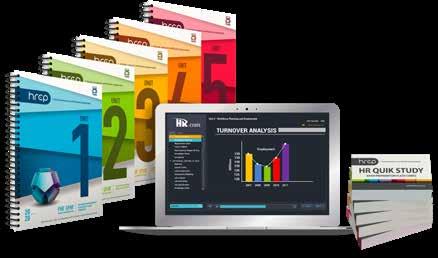
CALL TODAY TO FIND OUT MORE 1.877.472.6648 ext. 3 | sales@hr.com | HR.com/prepcourse
1 2 3
Payroll Without Borders
Navigating cross-cultural differences with confidence
By Excellence Publications Team
A company’s ability to embrace diversity and inclusivity can affect its success in attracting and retaining global talent. A culture of inclusion provides employees with a sense of belonging, which leads to increased job satisfaction, productivity, and innovation. To achieve a workplace that values cultural differences, organizations must recognize the importance of understanding cultural nuances when it comes to payroll and compensation.
Organizations that embrace cultural diversity in their payroll management can enjoy numerous benefits, such as attracting top talent, reducing turnover rates, and fostering a positive workplace culture. Attendees of the session with Kira Rubiano will learn how to navigate cultural differences and implement communication strategies that promote inclusivity, ultimately creating a more productive and satisfied workforce.
Asbusinesses expand across borders and embrace remote work, they face the challenge of adapting to the cultural differences in payroll management. Organizations must create compensation policies that respect the diversity of their employees, as well as the cultures they come from.
Payroll management is a critical aspect of any business, and it is essential to understand the unique characteristics of each country and region where your company operates.
Check out this webcast, where Atlas VP of Global Payroll Operations, Kira Rubiano shares insights into how businesses can navigate cross-cultural differences in payroll. She will highlight the importance of creating a culture that values diversity and encourages employees to bring their full selves to work. Would you like to comment?

HRIS & Payroll Excellence presented by HR.com APRIL 2023 56 Submit Your Articles
Top Pick
VIRTUAL EVENTS & HR.COM WEBCASTS UPCOMING www.hr.com/upcoming_webcasts www.hr.com/virtualconferences View our Upcoming Webcasts Schedule and Register Today! View our Upcoming Virtual Conference Schedule and Register Today! Taking Equity to New Heights With Vernice “FlyGirl” Armour May 10, 2023 3:00 PM - 4:00 PM ET REGISTER Retaining Today’s Employees: How to Improve Employee Engagement With Steve Boese May 16, 2023 3:00 PM - 4:00 PM ET REGISTER The State of High-volume and Hourly Hiring June 20, 2023 REGISTER Community and Connection: Fostering Employee Belonging in the Workplace May 3, 2023 1:00 PM - 2:00 PM ET REGISTER Navigating the HR Challenges of Multinational and Distributed Workforces May 11, 2023 11:00 AM - 12:00 PM ET REGISTER Gwyneth Paltrow on Challenging, Motivating and Inspiring Your Employees May 17, 2023 3:00 PM - 4:00 PM ET REGISTER The Future of HR’s Role in Organizational Success May 18, 2023 REGISTER WEBCASTS The Future of Employee Well-being June 7-8, 2023 REGISTER WEBCASTS VIRTUAL EVENTS
Thank you for partnering with us!
Paychex, Inc. (Nasdaq: PAYX) is a leading provider of integrated human capital management software solutions for human resources, payroll, benefits, and insurance services.


Designing better ways to work by providing cutting-edge products and exceptional experiences within HR, Talent, Time Management, Benefits and Payroll.


Global employment partner Omnipresent provides techenabled business solutions combined with personalized expertise to support hiring people globally.

Paycom (NYSE:PAYC) offers cloudbased human capital management software to help businesses streamline employment processes, from recruitment to retirement. With a robust suite of products including payroll, time and labor management.
LEARN MORE
empowers organizations to effectively respond to changing priorities. Use powerful automation, comprehensive analytics, and flexible workflows to ensure your global workforce can adapt and thrive.
LEARN MORE
US
THANK YOU
MORE PARTNER WITH
LEARN
MORE
LEARN
MORE
LEARN












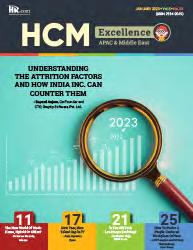
Publications 13 Targeted Publications to Reach Your Audience Informing, Educating, Enlightening and Assisting HR professionals in their personal and professional development, the Excellence series offers high-quality content through the publications! Like to submit an article? Use our online submission form or for more information go to www.hr.com/ExcellencePublications






For more information: Phone: 1.877.472.6648 | Email: ePubeditors@hr.com | www.HR.com/epubs HRIS & Payroll Excellence April 2023












































 Dave Ulrich
Dave Ulrich




 Caroline Werner, Chief People Officer at LogicGate
Caroline Werner, Chief People Officer at LogicGate





















 By Stefanie San Juan, Rippling
By Stefanie San Juan, Rippling



















 Sr. Director of Global Payroll at Globalization Partners
Sr. Director of Global Payroll at Globalization Partners












 By Brett Farmiloe, Terkel.io
By Brett Farmiloe, Terkel.io


































